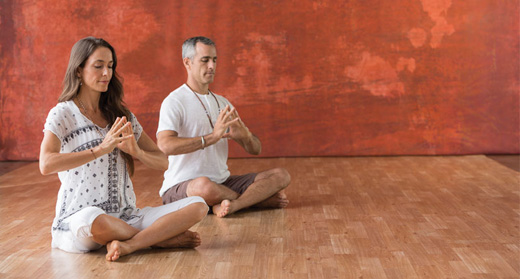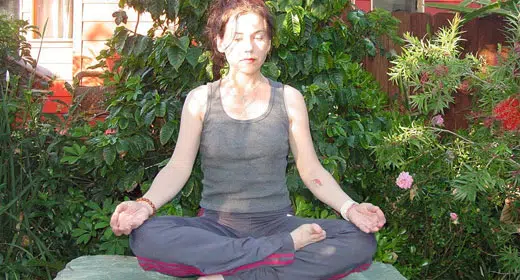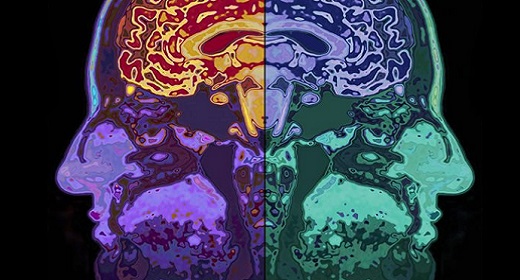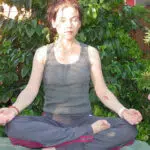You have the willpower and strength to kick bad habits for good. Find them with Kundalini Yoga. Plus, a Kundalini practice to try at home.

When was the last time you really thought about what you were doing when you reached for coffee in the morning, the candy jar at work, or your smartphone to check your email? Odds are it’s been a while. We all run through thousands of habitual behaviors like these a day. Some serve to make us more efficient, allowing us to breeze through small tasks as if by second nature, but others have the potential to become life disrupting or even life threatening. You may get a small thrill from eating sugary foods, spending money, checking your phone, throwing back another drink, or having sex with a toxic ex, but chances are you’re just distracting yourself from stress and pain that you don’t want to deal with, removing yourself from the present moment—and jeopardizing your long-term health and well-being in the process.
Facing your demons is essential for breaking bad habits, but many self-help methods and treatment systems focus on addressing symptoms, rather than helping you discover why you’re reaching for distractions. The key, instead, may be to reach inward, and that’s where yoga and meditation can help. Practitioners know that mind-body practices like these can foster the self-awareness, self-control, and self-realization necessary to go through a deeper detoxification. And a 2013 review on the efficacy of mindfulness as a complementary therapy for addiction at Duke Integrative Medicine, a holistic health-research center at Duke University, helps to confirm it. Researchers there concluded that mindfulness-based interventions, including yoga, may enhance addiction treatment, prevention, and recovery.
Even armed with all the benefits yoga and meditation provide, it can still feel like an uphill battle to kick a bad habit. That’s because these behaviors get hardwired into our brains. Neuroscience researchers have determined that the more we do an activity that feels good, even one with bad consequences, like abusing drugs or alcohol, the less neural activity we use when deciding to engage in that activity. Instead, we act on autopilot, even if we are no longer getting that initial buzz. But that doesn’t mean we’re helpless. Recent findings out of MIT suggest that our prefrontal cortex, the brain region responsible for integrating past experience with present action, seems to favor new habits. The trick to making these habits stick is to rewire your neural circuitry by finding something that gives you a similar thrill, but on a deeper, healthier, and more sustainable level. Breathwork, mindfulness training, and yoga deliver on all fronts.
Kundalini Yoga, specifically, is designed to strengthen intuition and willpower. Yogi Bhajan, who brought Kundalini from India to the West, was interested in helping people break unwanted habits and addictions. He created a rehabilitation center in Tucson, Arizona, that was part ashram, part primary-care facility for those in recovery. Through asana, pranayama, mudra, mantra, and deep relaxation, Kundalini asks you to summon the physical and mental strength to mindfully maintain repetitive actions, such as using Breath of Fire while holding Half Boat Pose, or Ardha Navasana, for up to three minutes. By committing to each movement despite your mind’s desire to stop, you are training your nervous system to resist temptation (in this case, the temptation to give up), just as you might train your muscles at the gym. It may not sound fun, but it comes with some pretty incredible benefits. Your endocrine system reacts by secreting chemicals that create feelings of balance and harmony, according to Yogi Bhajan and other Kundalini teachers. And you gain the awareness and power you need to resist the temptation to fall back into those bad habits you’re resolving to break for good this year.
Meditation to Release Stress and Clear Past Emotions
Come to a comfortable cross-legged sitting position. Place your fingertips together, forming a tepee with your hands, fingers pointing up and thumbs pointing toward your heart center. Look at the tip of your nose and inhale for 5 seconds, hold the breath for 5 seconds, then exhale for 5 seconds. Continue for 11 minutes then relax. If your breath is unsteady and shallow, it sends a signal to your body that its needs are not being met. This meditation creates a steady breath rhythm so that your body and mind can release stress and habitual ways of being.


















































